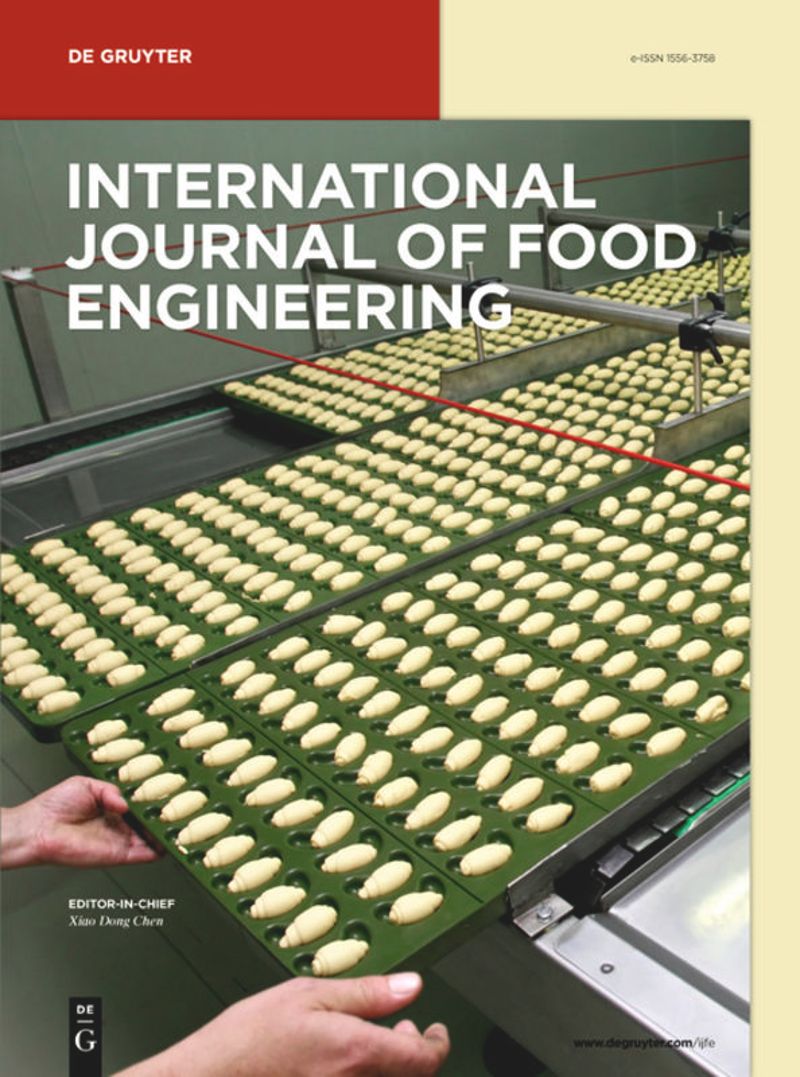气相色谱-离子迁移谱法(GC-IMS)和电子鼻技术对粳稻离体咀嚼过程香气特征的研究
IF 1.4
4区 农林科学
引用次数: 0
摘要
通过模拟大米在体外咀嚼过程中的香气变化,可以更好地了解大米在食用过程中的香气变化,有助于研究人们的感官偏好。为了研究大米在离体咀嚼过程中释放的香气,采用电子鼻和气相色谱-离子迁移谱法(GC-IMS)分析了大米丸在离体咀嚼过程中的气味指纹图谱。电子鼻分析结果表明,粳稻离体咀嚼的风味存在显著差异。此外,GC-IMS还测定了大米离体咀嚼过程中30种挥发性有机化合物(VOCs)的含量。其中,醛类化合物含量最高,其次为酮类化合物和醇类化合物。虽然煮熟的米饭中各种化学物质的浓度相对较高,但经过咀嚼后大多数化合物的浓度下降。咀嚼后丙二醇、乙醇和甲醇的浓度升高。多变量数据分析表明,粳稻在离体咀嚼过程中挥发性有机化合物主要为索戊酸异戊酯、戊醛、己醛、丙酮、己醛和柠檬烯。GC-IMS和电子鼻分析是互补的,建议使用这两种技术实现体外咀嚼过程中VOCs的快速、全面检测。本研究的结果使我们能够了解大米在口腔加工过程中的风味。本文章由计算机程序翻译,如有差异,请以英文原文为准。
Characterization of japonica rice aroma profiles during in vitro mastication by gas chromatography-ion mobility spectrometry (GC-IMS) and electronic nose technology
Abstract By simulating the aroma changes during in vitro mastication, we can better understand the aroma changes during rice eating, which is helpful in studying people’s sensory preferences. To investigate the rice aroma released during the in vitro mastication, the present study analyzed rice bolus’s odor fingerprints in vitro mastication using electronic nose and gas chromatography-ion mobility spectrometry (GC-IMS). The electronic nose analysis results showed significant differences in the flavor of japonica rice in vitro mastication. In addition, GC-IMS determined 30 volatile organic compounds (VOCs) during rice in vitro mastication. Among these compounds, the most important content was aldehydes, followed by ketones and alcohols. Although the concentration of various chemicals was relatively high in cooked rice, most compounds decreased after mastication. The concentration of propan-2-ol, ethanol, and methanol increased after mastication. Multivariate data analysis showed that isoamyl sovalerate, pentanal, hexanal, acetone, hexanal, and limonene were the main VOCs of japonica rice during in vitro mastication. GC-IMS and e-nose analyses are complementary and recommended for using the two techniques to achieve the VOCs’ rapid and comprehensive detection during in vitro mastication. Results from this study allowed us to understand rice flavor during oral processing.
求助全文
通过发布文献求助,成功后即可免费获取论文全文。
去求助
来源期刊
CiteScore
3.20
自引率
0.00%
发文量
52
审稿时长
3.8 months
期刊介绍:
International Journal of Food Engineering is devoted to engineering disciplines related to processing foods. The areas of interest include heat, mass transfer and fluid flow in food processing; food microstructure development and characterization; application of artificial intelligence in food engineering research and in industry; food biotechnology; and mathematical modeling and software development for food processing purposes. Authors and editors come from top engineering programs around the world: the U.S., Canada, the U.K., and Western Europe, but also South America, Asia, Africa, and the Middle East.

 求助内容:
求助内容: 应助结果提醒方式:
应助结果提醒方式:


